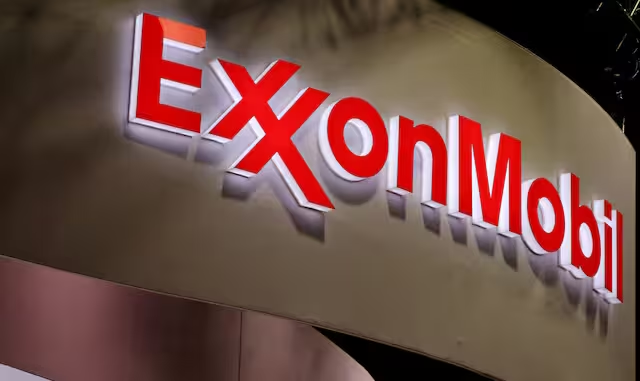
In a significant milestone for global energy production, ExxonMobil has commenced operations at its fourth major offshore development in Guyana, the Yellowtail project. This announcement comes on the heels of the company’s second-quarter 2025 earnings report, which showcased resilient performance despite challenging market conditions. As ExxonMobil continues to expand its footprint in one of the world’s hottest oil basins, investors are keenly watching how these developments could bolster future profitability. Below, we dive into the Q2 results, the implications of the new Guyana production, and key factors for investors to monitor.
Q2 2025 Earnings: A Mixed Bag of Resilience and Headwinds
ExxonMobil reported net earnings of $7.1 billion for the second quarter of 2025, translating to $1.64 per share. This represents a slight decline of $631 million from the first quarter’s $7.713 billion, primarily due to weaker crude prices and lower refining margins. Year-to-date earnings stood at $14.8 billion, down $2.7 billion from the first half of 2024, reflecting broader industry pressures from softer commodity prices and increased depreciation costs.
Are you from California or New York and need a tax break?
Revenue for Q2 came in at $81.5 billion, a decrease from $93.1 billion in the same period last year, underscoring the impact of volatile energy markets. However, cash flow from operating activities remained robust at $11.5 billion, supporting ongoing investments and shareholder returns. The company continued its aggressive share repurchase program, buying back shares worth billions and staying on track for $20 billion in repurchases for the full year.

Guyana’s three operational developments (Liza Phase 1, Liza Phase 2, and Payara) were producing approximately 650,000 gross barrels per day (bpd) during Q2, contributing significantly to ExxonMobil’s upstream earnings.
Despite the quarterly dip, ExxonMobil’s structural cost savings—on pace to deliver $18 billion cumulatively through 2030—and volume growth from high-margin projects provided a buffer against market softness.
The results beat analyst expectations, with EPS surpassing forecasts by about 5%.
Yellowtail Startup: Boosting Guyana’s Output to New HeightsJust days after the earnings release, on August 8, 2025, ExxonMobil announced the start of production at Yellowtail, its fourth offshore project in Guyana’s prolific Stabroek Block. The project utilizes the ONE GUYANA floating production, storage, and offloading (FPSO) vessel, the largest in the company’s Guyana fleet, with a production capacity of 250,000 bpd and storage for up to 2 million barrels. This startup was achieved four months ahead of schedule, highlighting ExxonMobil’s operational efficiency in deepwater developments.
With Yellowtail online, Guyana’s total installed capacity now exceeds 900,000 bpd, combining output from the existing Liza Destiny, Liza Unity, and Prosperity FPSOs.
ExxonMobil, as the operator with a 45% stake (alongside partners Hess at 30% and CNOOC at 25%), stands to gain substantially from this expansion. The oil from Yellowtail is marketed as Golden Arrowhead crude, adding to the high-quality, low-sulfur blends that have made Guyana a key player in global supply. This marks the fourth major project ExxonMobil has brought online in Guyana since 2019, all under budget and ahead of schedule—a testament to the company’s strategy in the region. Looking ahead, ExxonMobil plans four more developments by the end of the decade, aiming for a total production capacity of 1.7 million boe/d by 2030.
How Guyana Production Could Propel Future Earnings
The consortium’s overall profit from Guyana surged 64% to $10.4 billion that year, driven by ramped-up production.
The addition of 250,000 bpd from Yellowtail could add hundreds of millions in quarterly revenue, assuming average oil prices around $80 per barrel. ExxonMobil’s 45% share equates to roughly 112,500 bpd of incremental output at peak, potentially boosting earnings by offsetting declines elsewhere and enhancing margins through low-cost, high-return barrels. Company executives have highlighted Guyana as a core driver of advantaged volume growth, with YTD 2025 earnings already benefiting from the region’s contributions despite lower prices.
In the broader context, Guyana’s low breakeven costs (estimated below $30 per barrel) provide a hedge against price volatility, making it a stabilizing force for ExxonMobil’s portfolio. As production scales, it could help the company achieve its projected $3 billion earnings uplift in 2026 from new project startups.
What Investors Should Look For Moving Forward
As ExxonMobil navigates a dynamic energy landscape, here are key areas for investors to monitor:
- Production Ramp-Up and Efficiency: Watch how quickly Yellowtail reaches peak output. Past projects in Guyana have ramped up faster than expected, which could accelerate revenue gains. Any delays due to technical or regulatory issues could temper short-term upside.
- Oil Price Trends and Market Demand: With Guyana’s output skewed toward crude, fluctuations in Brent prices will directly influence profitability. Investors should track geopolitical events, OPEC+ decisions, and global demand signals.
- Cost Management and Capital Discipline: ExxonMobil’s focus on structural savings has been a bright spot. Look for updates on capex guidance ($27-29 billion for 2025) and whether efficiencies in Guyana continue to drive down unit costs.
- Future Project Pipeline: Progress on upcoming developments like Uaru (fifth project) and Whiptail (sixth) will be crucial. Timely approvals and executions could solidify Guyana’s role in delivering long-term growth toward the 1.7 million boe/d target by 2030.
- Shareholder Returns and Balance Sheet Health: With strong cash flows, expect continued dividends (currently yielding around 3-4%) and buybacks. However, monitor debt levels post-Pioneer acquisition and any integration challenges.
- Environmental and Regulatory Risks: Guyana’s rapid oil boom has raised sustainability concerns. Investors should watch for updates on emissions reduction efforts, flaring policies, and potential litigation, including any lingering disputes over the Hess merger arbitration.
In summary, ExxonMobil’s Q2 earnings demonstrate operational strength amid headwinds, while the Yellowtail startup positions the company for accelerated growth in one of the industry’s most promising frontiers. For energy investors, Guyana isn’t just a project—it’s a cornerstone of ExxonMobil’s future value creation. Stay tuned to Energy News Beat for more updates on this evolving story.
Is Oil & Gas Right for Your Portfolio?
Crude Oil, LNG, Jet Fuel price quote
ENB Top News
ENB
Energy Dashboard
ENB Podcast
ENB Substack






